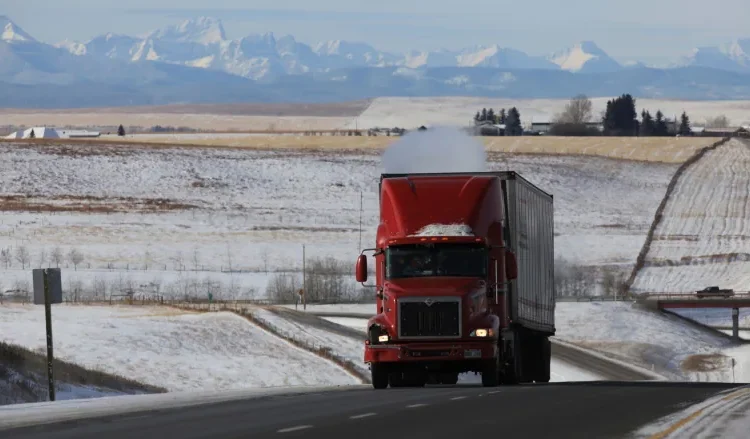It’s part of why new drivers have been facing challenges obtaining insurance
Alberta’s truck training program — MELT — is “woefully inadequate” to prepare new drivers to operate safely on the province’s roadways, according to the Insurance Bureau of Canada.
It’s seeing an increase in collisions and trucking claims, which has significantly increased the cost of insurance and made traditional insurance companies reluctant to insure new drivers.
CBC previously reported that Alberta’s trucking industry continues to struggle with a driver shortage, in part because of challenges obtaining insurance for new drivers.
“Alberta’s insurers simply don’t have the confidence that the MELT program is adequately preparing drivers for our roadways,” said Aaron Sutherland, Insurance Bureau of Canada (IBC) vice-president.
MELT, which stands for Mandatory Entry-Level Training, provides about 120 hours of truck training. The Class 1 MELT program includes 40.5 hours of classroom instruction, 15.5 hours of in-yard instruction, 57 hours of behind the wheel training and 8.5 hours of air-brake training.
Sutherland said that isn’t enough for trainees.
He said the 120-hour program doesn’t stack up to the more than 600 hours of in-class and behind-the-wheel training in other provinces.
“It’s more of an orientation and it’s not a safe-driving program.”
That’s why, in September, IBC proposed a number of potential solutions to the Alberta government to help improve road safety and lower insurance costs — ultimately attracting more drivers to the industry and helping with the ongoing driver shortage.
Potential solutions proposed to the provincial government
The MELT program has a few challenges that are hindering the province’s ability to attract more drivers, Sutherland said, starting with the cost.
“The cost of MELT is about $10,000 per driver. That’s quite high compared to other jurisdictions and provinces, where it can be $1,000.”
The government must subsidize or reduce the cost of MELT for new drivers to increase accessibility, he said.

IBC would also like to see more courses that look at hazardous aspects of truck driving, such as navigating difficult terrain and how to safely haul dangerous cargo.
Additionally, he said Alberta needs to start treating truck driving like a skilled trade.
“Hairdressers have a more rigorous training program than commercial truckers do,” said Sutherland.
Negative impact to truck driving schools
Harjeet Singh, owner of Alberta Truck Training and Driver Education, said the more training, the better — but IBC’s proposed solutions won’t solve the ongoing driver shortage.
Instead, he said, it will put truck driving schools out of business.
“The diesel and fuel prices and everything is going up, insurance for truck driving schools are going up, so you won’t be able to cover the cost,” said Singh.
“It’s a ripple effect all over the place.”
Insurance available for high-risk drivers, but more costly
In the meantime, Sutherland said insurance for new drivers is available through the Facility Association, which provides insurance to high-risk drivers in Alberta and spreads the cost of accidents across the market.
He notes it is more expensive than standard insurance through the direct market.
But sometimes, it’s the only choice new drivers have as regular insurers are often reluctant to insure drivers with less than a few years of experience.

“They’re looking for new truck drivers to gain that experience through the Facility Association for a few years,” said Sutherland. “Once they go through that, then they can enter the standard market.”
Singh said some students have been insured through the Facility Association, but more needs to be done to increase insurance affordability and accessibility for new drivers.
“If we don’t address this properly right now, it’s going to get worse and worse every year.… The shortage numbers are going to increase. So we need to address this as soon as possible,” said Singh.
Sutherland said IBC is in ongoing dialogue with the province, and there’s an “earnest interest” from the government to look into the training program.
“We need to be pulling every lever that we can to try to make sure that we have enough people on our roadways to get our goods to market.”
Hadyn Place, acting chief of staff for the Office of the Minister of Transportation, says the province’s program aligns with the standards agreed to by the provinces and territories.
“The fact remains, as industry is telling us, that insurance for new drivers is extremely hard to get or comes with very high premiums, especially for smaller trucking companies,” he added in an emailed statement.
“Alberta’s government will continue to work with the insurance industry to help resolve this issue so that we can get our newly trained drivers insurance coverage so they can get the experience they need to get jobs and help reduce the commercial driver shortage.”


